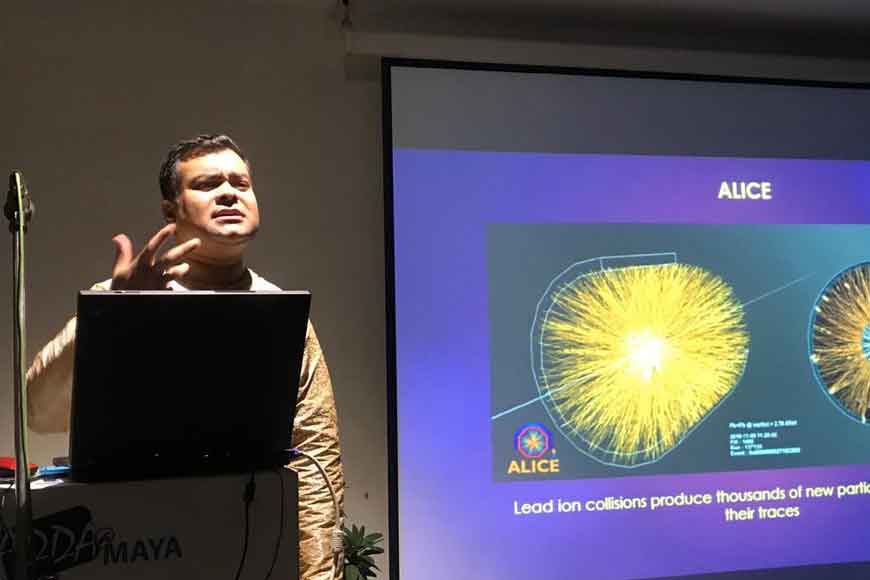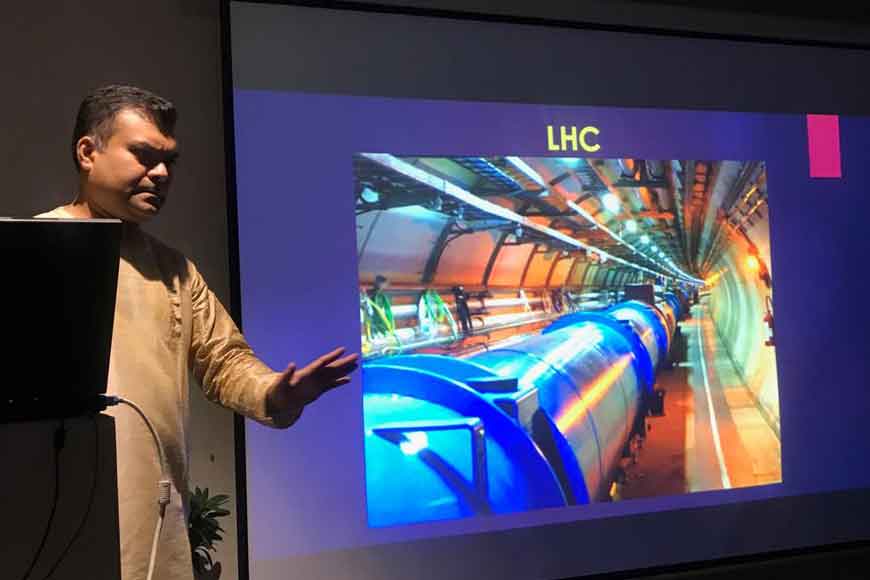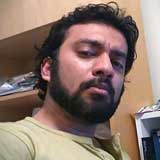CERN scientist Sabyasachi Siddhanta on Particle Physics

Sabyasachi Siddhanta is a world-renowned physicist from Bengal who started his career at CERN as an engineer and has been working with ALICE project since 2006. He held a workshop recently at MAYA Art Space, Kolkata, where he discussed on the Origins of Life. On the sidelines, he also spoke to GB on the scope of developing world-class research facilities in Bengal
• What according to you is role of quantum chromodynamics in advancement of particle physics?
Particle Physics covers a vast field of study on behavior and interactions of fundamental particles such as electrons, quarks etc. The principal basis of Particle Physics is Standard Model. In Standard Model, the fundamental particles have been classified and their properties are explained. There are four kinds of such forces (or interactions) in the universe – strong force, weak force, electromagnetic force and gravitational force. Standard Model encompasses the working of strong force, weak force and electromagnetic force. Out of these, strong force is the interaction between quarks, combining to make a particle called ‘Hedron.’ Quantum Chromodynamics is the study of this specific interaction among quarks. Hence, in relation to the advancement of Particle Physics, the role of Quantum Chromodynamics is at the very core of research.
• How viable it is for a country like India to build an infrastructure and well-equipped laboratories to set up something as advanced as ALICE detector?
ALICE detector experiment is extremely complex and is conducted on a huge scale. It is not autonomous but dependent on a central scientific accelerator facility like Large Hadron Collider (LHC), in CERN. It is impractical for a single country to build such an infrastructure all by itself (from an economic and expertise level perspective). All EU countries have contributed in building the facility at CERN. Similarly, I think if the member countries of SAARC, or ASEAN, come together and plan something like this, the implementation would be considerably viable.
• ALICE in CERN involves more than 1000 scientists from more than 30 countries. How is a project of such big magnitude planned and sustained?
There is an organizational structure for each of the experiments at CERN. At the top there are two head officials – chairman and spokesperson. The chairman oversees the funding dynamics of the collaboration board formed by institutional representatives of various countries. The spokesperson heads the research department. Under the spokesperson, there is also a technical coordinator who manages technological and instrumentation perspectives of an experiment. There are different experts who work further down the hierarchy, designing and implementing policies. The institutes that are involved in an experiment, monetarily contribute to sustain and develop the infrastructure. The funding also depends on the EU country that is represented by a research institute.

• What are the technologies used to visualize the different stages of experiments and tests related to ALICE?
The experiments, such as ALICE, are built or set by several detectors. Each detector has different functions. Some measures energy emitted by a particle, some ascertains characteristics of a particle, and so on. The particle interactions that occur in the experiment are often to the tune of milliseconds or even lesser. The electronic segment of a detector converts the interaction and its effect into a signal. This is a piece of data. Terabytes of data are collected in this manner. The various kinds of data are amalgamated, cleaned and analyzed. A considerable fragment of this information is visualized via advanced level monitors. The software used are developed by us, that enable us to get a sketchy idea about the visuals produced by a quark-gluon plasma.
• From a long-term perspective, how Large Hadron Collider (LHC) can help us to understand universe more lucidly?
LHC is a central facility and experiments are planned over years, so they are performed from a long-term perspective. To reach a sound scientific conclusion, a vast amount of statistical data is required, experiments are conducted for many years. For example, from ATLAS experiment, the Higgs-Boson particle has been discovered after several years. No concrete judgment can be extracted from one experiment. But what we get is a direction, a block of knowledge, that guides us further to unravel the mysteries of universe.
• How is the Indian Science Community involved in such high-end labs and research projects?
The Indian Science Community is directly involved with various experiments at CERN since many years including Saha Institute of Nuclear Physics, Tata Institute of Fundamental Research, Bhabha Atomic Research Centre etc. We have the expertise to do top class research. But setting up a high-end lab is only possible through government initiatives and well-defined policies.
• How far you think Bengal has a potential of developing state-of-the art science laboratories considering we have the best of brains?
There are undoubtedly numerous top-notch institutes in Bengal, especially in and around Kolkata, such as Jadavpur University, Rajabazar Science College, Indian Association for Cultivation of Science, Indian Statistical Institute etc. I don’t know whether any other region in India has so many internationally recognized institutes. So, there is no question that we have the best brains here. But to develop state-of-the art science laboratories, like I had said before, serious government initiatives and implementation of insightful policies are required. Even here, a collaborative effort can be designed to build a lab, for example several neighbouring states can come together and fund the purpose.
• How has scientific research been encouraged in Bengal?
I can only say about the field of Physics to which I’m related. To put it simply, if a person can’t find a facility and a comprehensive research environment that suits his field of choice, then he is bound to seek for other options elsewhere. This is one of the basic reasons of brain drain. It can’t be altered within a day. A long-term planning is required to build and sustain research facilities. The onus is on government. Another crucial point is industrial partnerships with research institutes, that is prevalent in developed countries. This combines the expertise of the industry and the academic institutes, which is crucial to enrich the research environment. This culture needs to be developed here.









